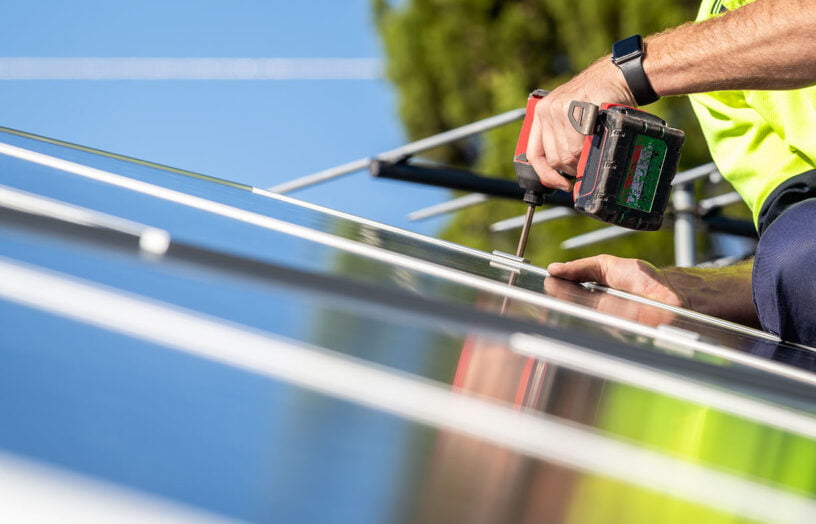New choices in lighting: An LED buyers guide

The move to LED lighting has become mainstream, with more options appearing constantly. Lance Turner takes a look at what’s available.
For many homes, lighting is one of the most overlooked aspects. Incorrect lighting can make a room unpleasant to be in, or make it more difficult to perform tasks such as reading or cooking. Getting it right can take a bit of effort, and though this guide won’t answer all your questions about lighting design, hopefully it will give you a headstart when thinking about the types of lighting to use and the questions to ask.
With almost all lighting technology moving towards LEDs, this guide focuses on LED bulbs. Even the reasonably efficient technologies such as fluorescent tubes and compact fluorescent lamps are rapidly being replaced by LED lighting. It’s likely that within 10 years, most other light sources will have disappeared in favour of the robustness, longevity and energy efficiency of LEDs.
What is an LED?
LEDs (light emitting diodes) are unlike any other lighting system. They contain no glass tubes or heating filaments, instead using a small piece of semiconductor material (as used in computer chips) that emits light directly when a current is passed through it.
LEDs produce light in a range of colours, without the need for coloured filters; thus, to get white light, a phosphor is used over a blue or UV LED chip, similar to what’s used in a fluorescent tube.
Note that the LED is actually the small light producing element(s) in a light bulb or fitting, but most people now erroneously refer to LEDs as the entire bulb or fitting.
LED specs
There are a number of specifications that are useful to consider when buying LED lights.
Bulb wattage
All light bulbs have a wattage rating, which measures how much power they consume. This is where LEDs have a shining advantage over older, more inefficient technologies. For domestic LED lights, the rating is usually between one and 20 watts, compared to a typical incandescent rating of 25 to 100 watts.
Light output: lumens, LUX and beam angle
Many LED bulbs include an ‘equivalent-to’ wattage rating, showing the wattage of the incandescent bulb that the LED bulb is equivalent to in terms of light output. For example, a six watt LED bulb might be rated as putting out the same amount of light as a 50 watt incandescent.
This ‘equivalent-to’ rating is based on the light output in lumens. The lumen rating of an LED bulb, usually included on the packaging, measures the total light output, relative to the response of the human eye.
For bulbs that are suitable for general room lighting—those with wide beam angles, above 60 degrees, but preferably 90 degrees or more—matching lumens for lumens should give you the result you need. Thus, for these types of lights (these are generally found in the common Edison screw, bayonet or ‘oyster’ fittings), the ‘equivalent-to’ rating should be all you need to determine if the bulb is a suitable replacement.
For directional lights, often known as spot lights, it’s a bit different. These are lights with a smaller beam angle, up to around 60 degrees. Such lights are generally used for task lighting, directed onto a desk or work area. Halogen downlights are an example of these—it’s because of their small beam angle that so many of them were needed to light a room! For these spot lights, small differences in the beam angle can make a big difference in how bright the light appears. Many people have had the experience of buying an LED bulb which was meant to be equivalent to a 50 watt halogen, but found that it appears much less bright. The lumens may have been lower, but more likely the beam angle was narrower, creating a bright light directly under the light but darker patches around it.
For the full tables from this guide in PDF format, click here
Read the full article in ReNew 133.
This article was first published in Renew 133 (October – December 2015). Renew 133 has a focus on reuse and recycling.
Recent articles
 All-electric
All-electric
Mandatory disclosure of energy ratings on the horizon
Graham Hunt introduces us to a soon-to-be-implemented national framework that will be a massive win for renters and homebuyers.
Read more Efficient homes
Efficient homes
Tradies and the transition
Do we need as many tradies for electrification as many think? Not if we are innovative, writes Alan Pears.
Read more Efficient homes
Efficient homes
Double glazing on the (very) cheap
Do we need as many tradies for electrification as many think? Not if we are innovative, writes Alan Pears.
Read more
